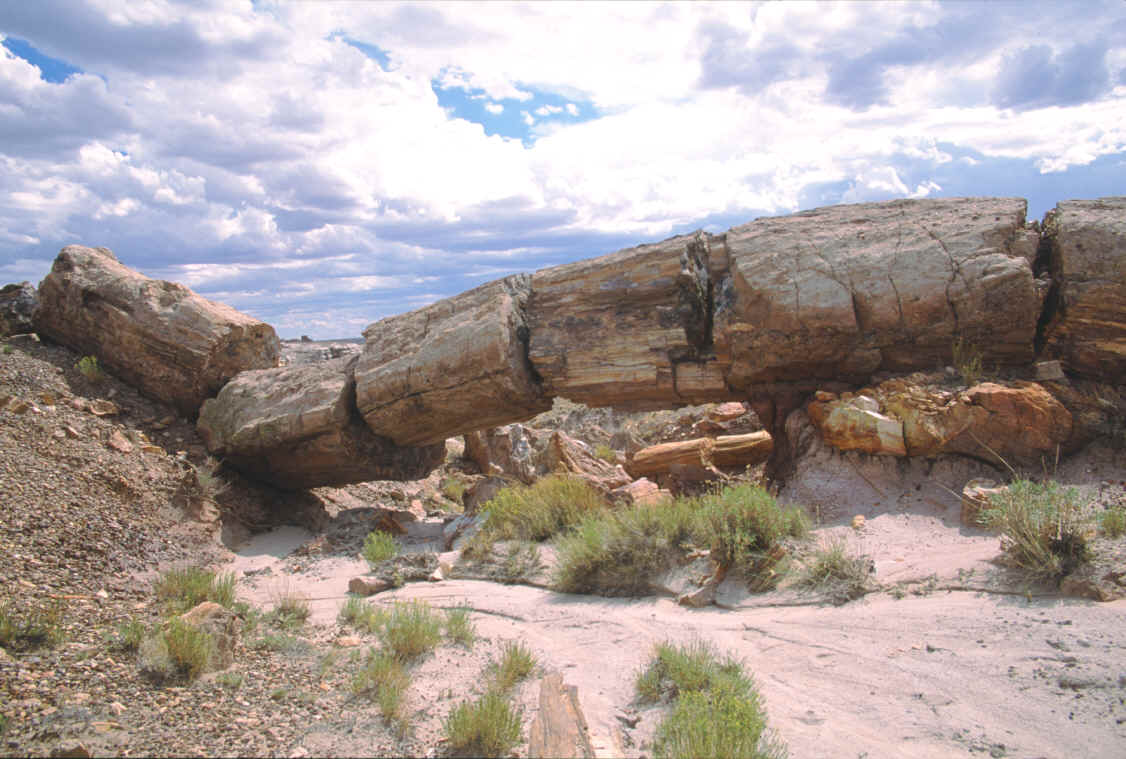

Northern Arizona has much the same geology as southern Utah, so it is prime territory for rock formations also. Many fine arches and a few natural bridges can be found in the state, including the unique Wrather Arch, one of the largest in the world. The Grand Canyon, for all its millions of years of erosion, has very few; most are found in the Navajo Reservation in the northeast part of the state.
Hawkeye Arch --
far northern Arizona, near the Utah border, Navajo Reservation. This great
arch is so named because of the large eye formation seen on the cliff behind the
arch. Actually, the bar forming the "eyelid" is also an arch,
being separated from the cliff wall by a few feet.

The great Wrather Arch,
Arizona's largest, and one of the country's top ten. To see this arch was
the longest hike I have ever done -- four days of backpacking the Paria River,
yes, IN it, wet shoes, mud and all. The hike starts in Utah, though you're
in Arizona by the time you get to the arch... if you find it. It is so
hidden in a small side canyon that you would probably never find it without a
topographical map. Its shape is the most unusual of the world's top spans,
being just a giant arm reaching down over a large space littered with rockfall.
And small rocks continue to flake off and fall inside this arch because of the
massive pressure above... I know, I spent the night under it, and it was a bit
eerie.


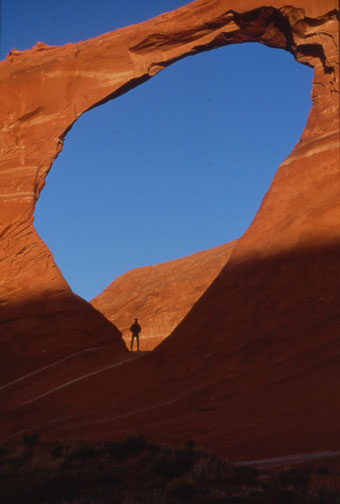
Me in the Hope Arch, near the
Canyon de Chelly National Monument, eastern Arizona.
Tonto Natural Bridge,
near Payson AZ -- this natural bridge could just as easily be considered a
natural tunnel; it is longer than it is high, a very unusual structure.

The White
Mesa Arch is located in
the White Mesa of northern Arizona,
on the Navajo Reservation.
The beautiful colors of the sandstone
almost make it look like marble.
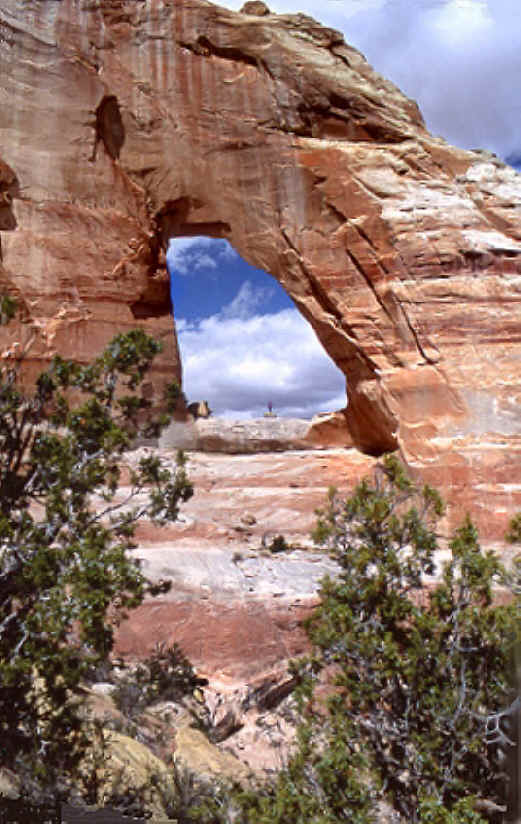
.
White Craig Arch, also in the White Mesa of northern
Arizona.
This is a fine example of a jughandle arch, meaning it comes out from the side
of a ridge and is higher than it is wide.
Jughandles are quite stable and will usually last much longer than wider arches.
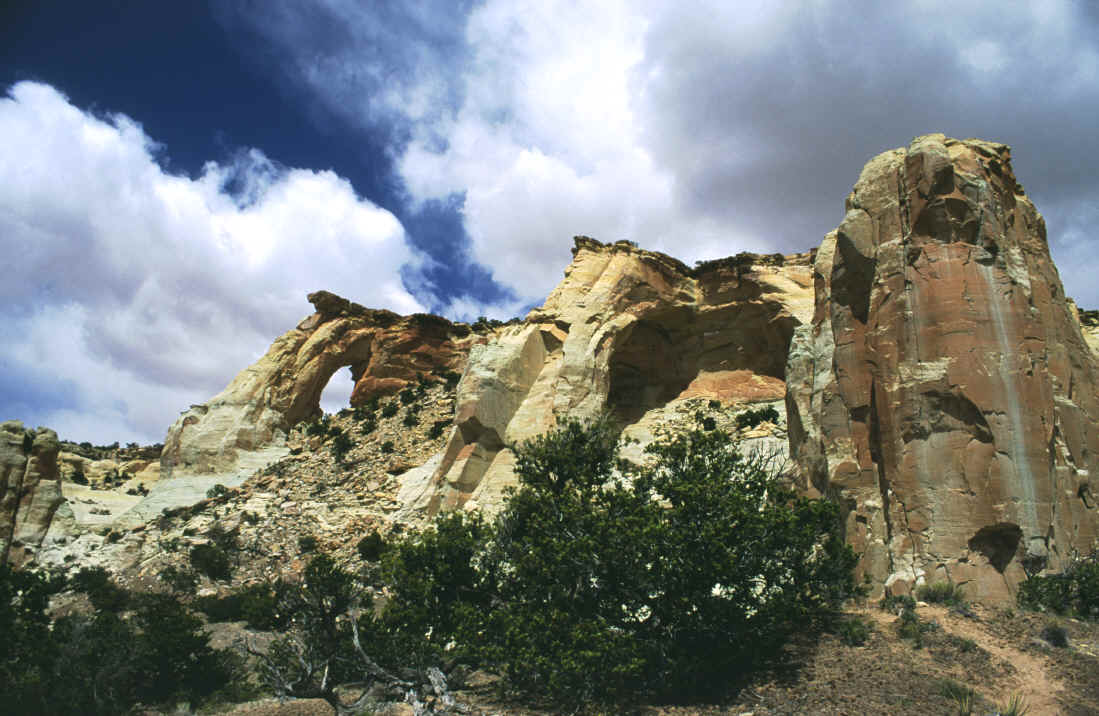
The wonderful free-standing Royal Arch
of eastern Arizona... (not to be confused with the Royal
Arch in the Grand Canyon, which I've never been to yet).
I had quite an adventure just getting to this one, as you can read about in
my story on this site.

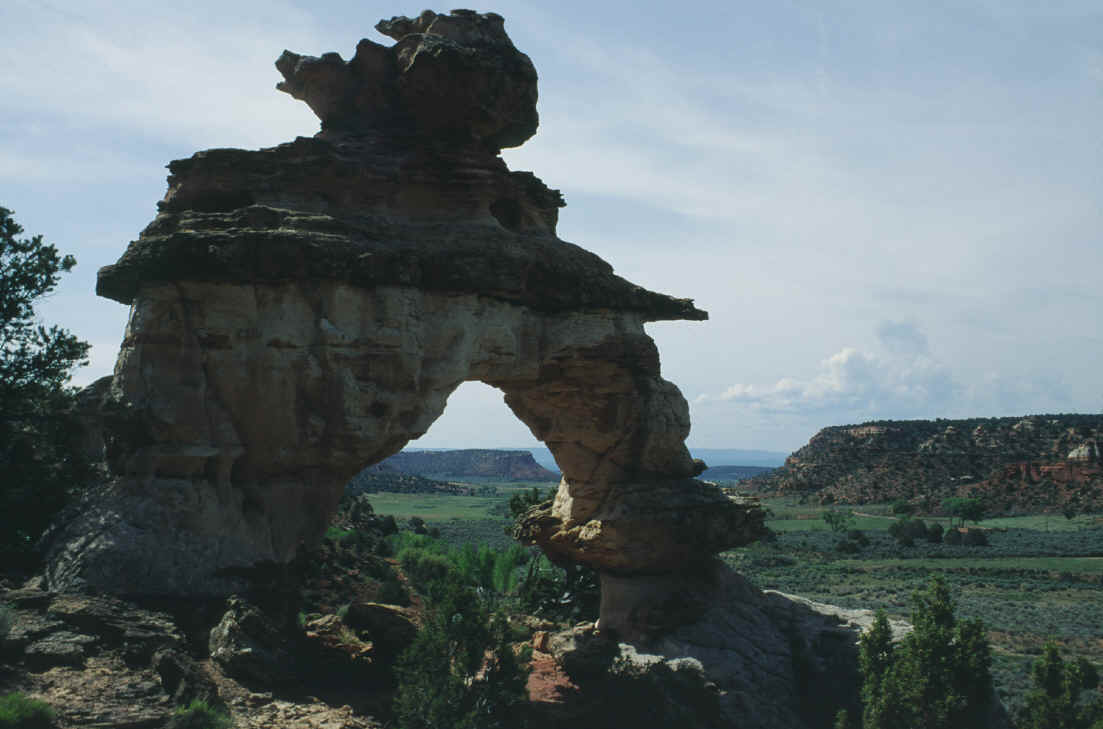
The Eagle Arch --
an unusual free-standing arch
made of light and dark rock,
overlooking a pretty green valley
in northern Arizona.
Petrified Log Natural Bridge
-- Petrified Forest National Park, eastern Arizona
Okay, so it may be stretching things a bit to call
this a natural bridge... but it fits the description, a natural rock structure
undercut by water!
The log is quite possibly 300 million years old -- that's from before the age of
the dinosaurs.
It is definitely
one of the most unusual bridges anywhere, and incredibly fragile and
precarious. I, as a dumb teenager, actually walked across it. Do not
do that!!
